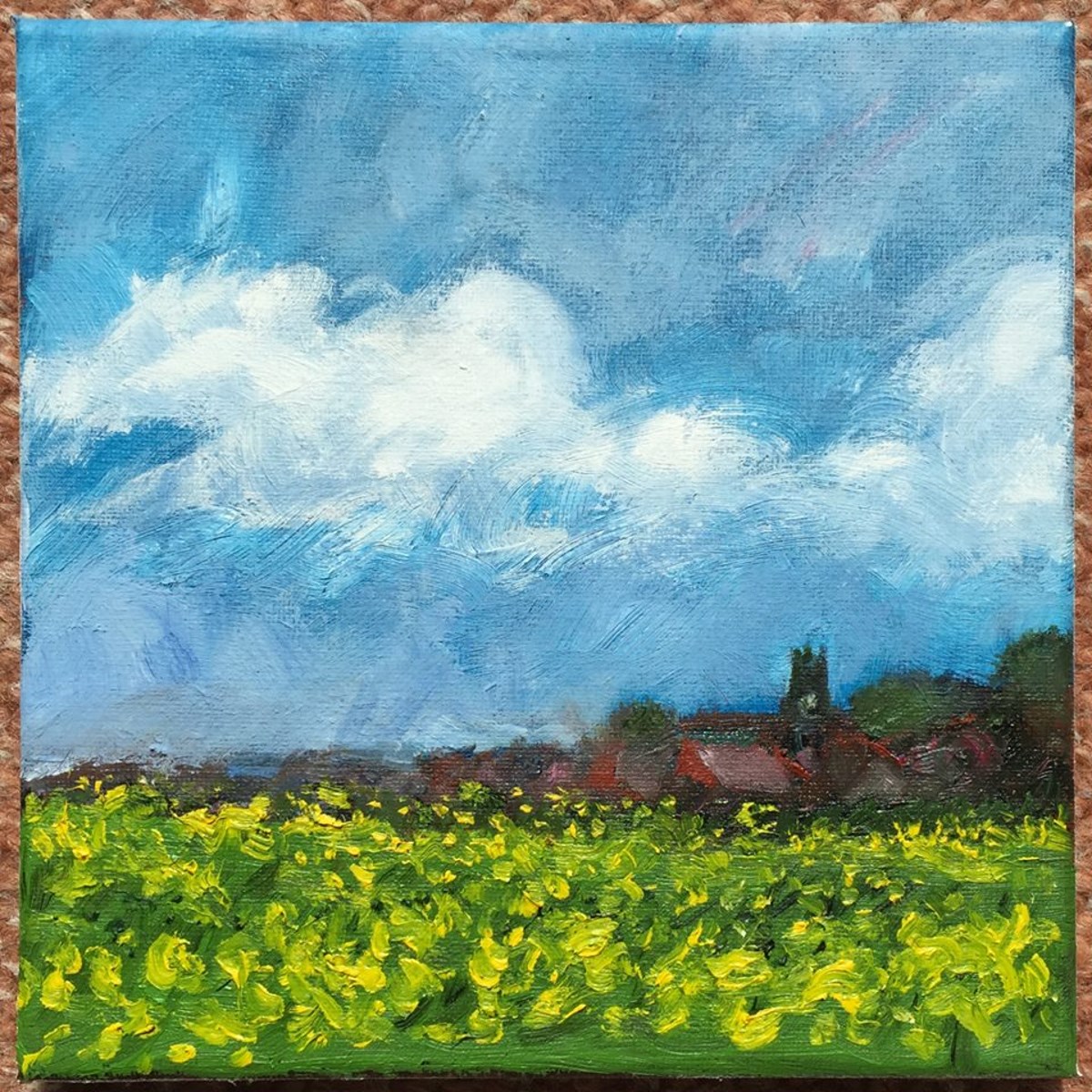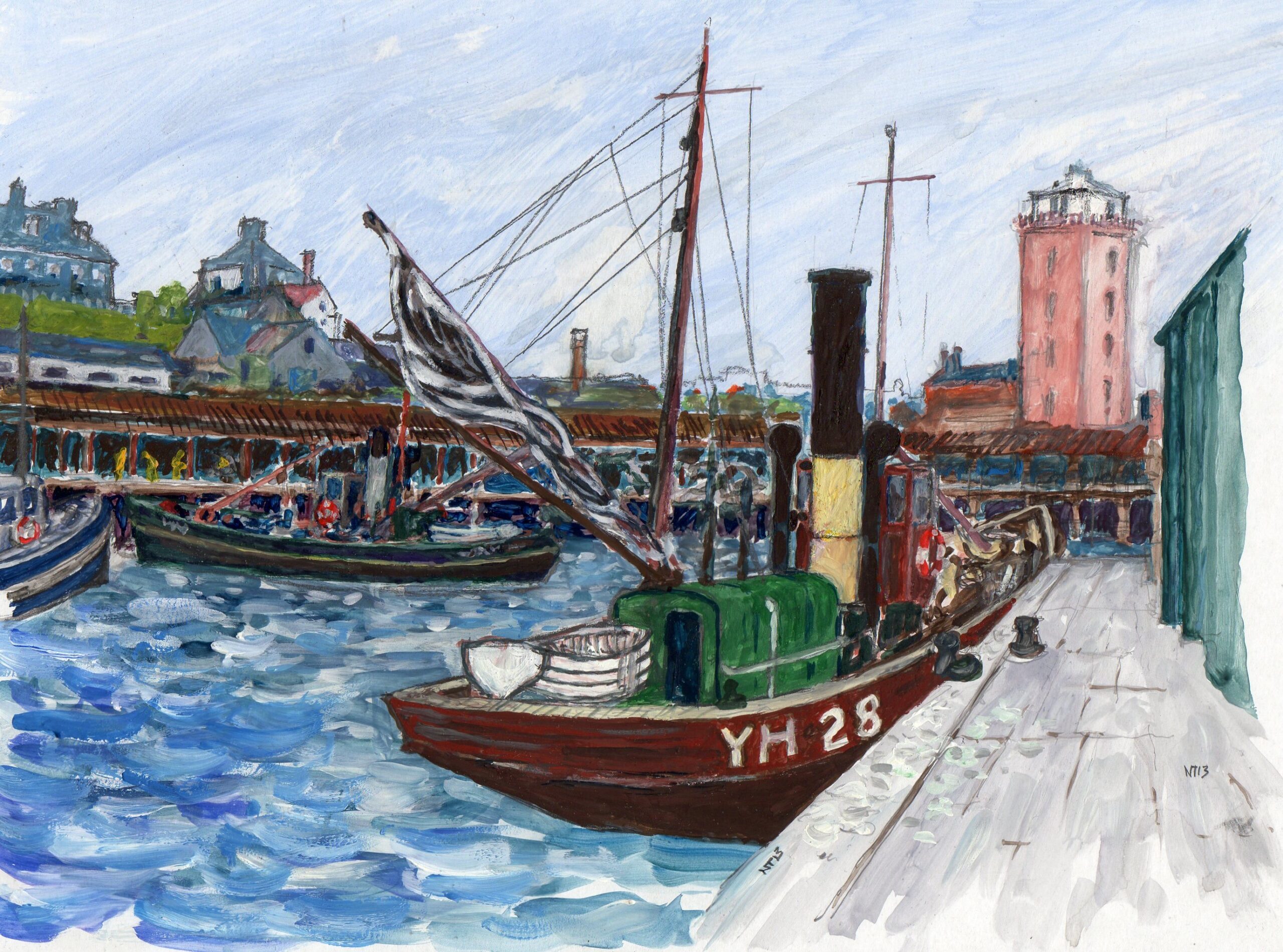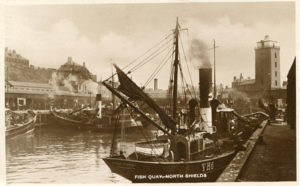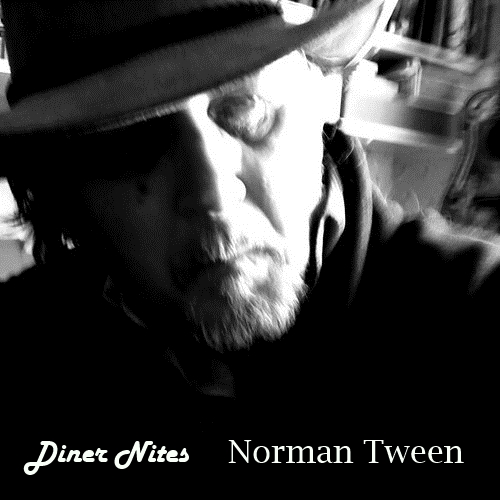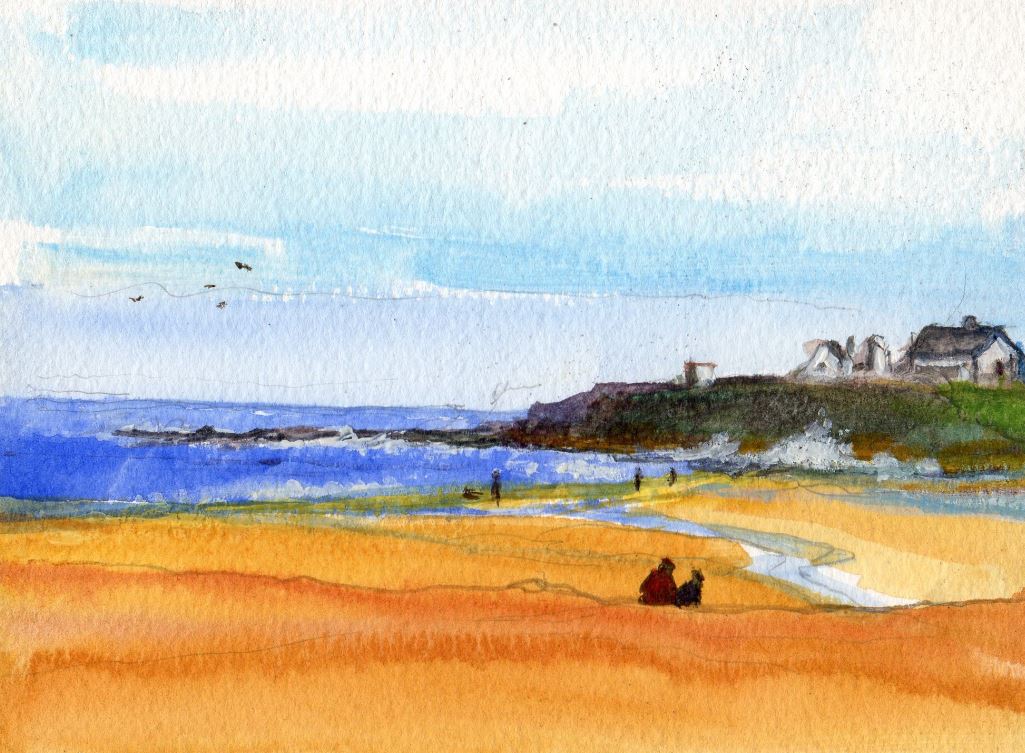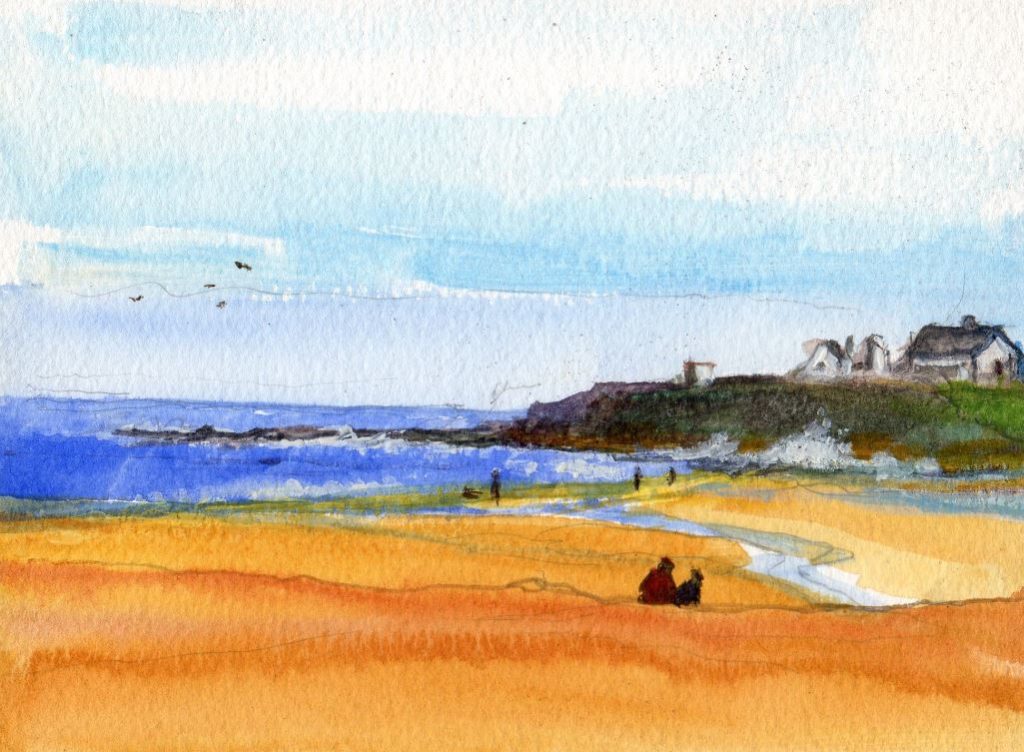Norman Tween
Earsdon Village from Rake Lane by Norman Tween
Earsdon Village from Rake Lane. Rapeseed oil crop flowering. This rough oil study is a couple of years old. 8×8 inches. Cheap and quick to paint. Beyond the church lies the Victorian graveyard where over 200 victims of the New Hartley pit disaster, many of them children, were laid to rest. There can be great pain in beauty…..Norman Tween
“Vibrant”. That is what this little painting has been called. The use of space here is virant indeed. The village occupies so little of the canvas and does so, so perfectly. The reddish hues compliment the green of the field and separate the field from the pretty blue sky. This sky has movement in it, the brushstrokes seem active.
Lovely!
Fish Quay North Shields by Norman Tween
The tall reddish building (the 18th Century ‘Low Light’ which assisted navigation from the river entrance)
This guache sketch is drawn from an old postcard photo of the Fish Quay c1940s. I made up the colours but the Low Light is seen with its former pre-white fascia. I doubt the workers in the fish sheds would be wearing yellow oilskins then, probably black. The outline of Knott’s Flats, completed c1938, can just be seen in the far background to the left of the Low Light.
The High Light is on the bank above. Boats coming in aligned both buildings to avoid the rocks in the estuary. Cliffords Fort is behind the Low Light. Some signs of the Fort wall remain.
The fascinating North Shields Fish Quay dates back to the 13th Century. Amongst its many historical elements is Clifford’s Fort, a Scheduled Ancient Monument built in the 17th Century as part of a network of coastal defences.…….Fish Quay
From Wiki:
North Shields is a town on the north bank of the River Tyne, in the metropolitan borough of North Tyneside, Tyne and Wear in North East England. Historically part of Northumberland, it is located eight miles (13 km) east of Newcastle upon Tyne.
Its name derives from Middle English schele meaning ‘temporary sheds or huts (used by fishermen)’,[1] and still today, the area is synonymous with fishing and other trades associated with seafaring.
The Folk Music of Norman Tween (RoadDog-1)
Founded in 1917 as a subsidiary of the Wisconsin Chair Company, Paramount recorded more than 10,000 tracks of jazz, blues, gospel,and hillbilly music before going down during the Great Depression. Paramount saved so much of the folklore which resided in the music of the times.
In the same tradition, Artvilla is proud to represent Norman Tween. His recordings share a voice which is like the finest aged whiskey.
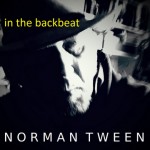
Rocky Island from Seaton Sluice beach, a Watercolor by Norman Tween
Rocky Island from Seaton Sluice beach autumn 07. Sitting on an old WW2 tank trap to daub this colour sketch.
This “sketch” has perfect tone and is reminds me of Van Gogh is the construction of the buildings and the layers of the landscape itself. The distant figures are Pissaro-like tiny sketches. It’s a beautiful scene which has more in it, a glimpse of art itself.

